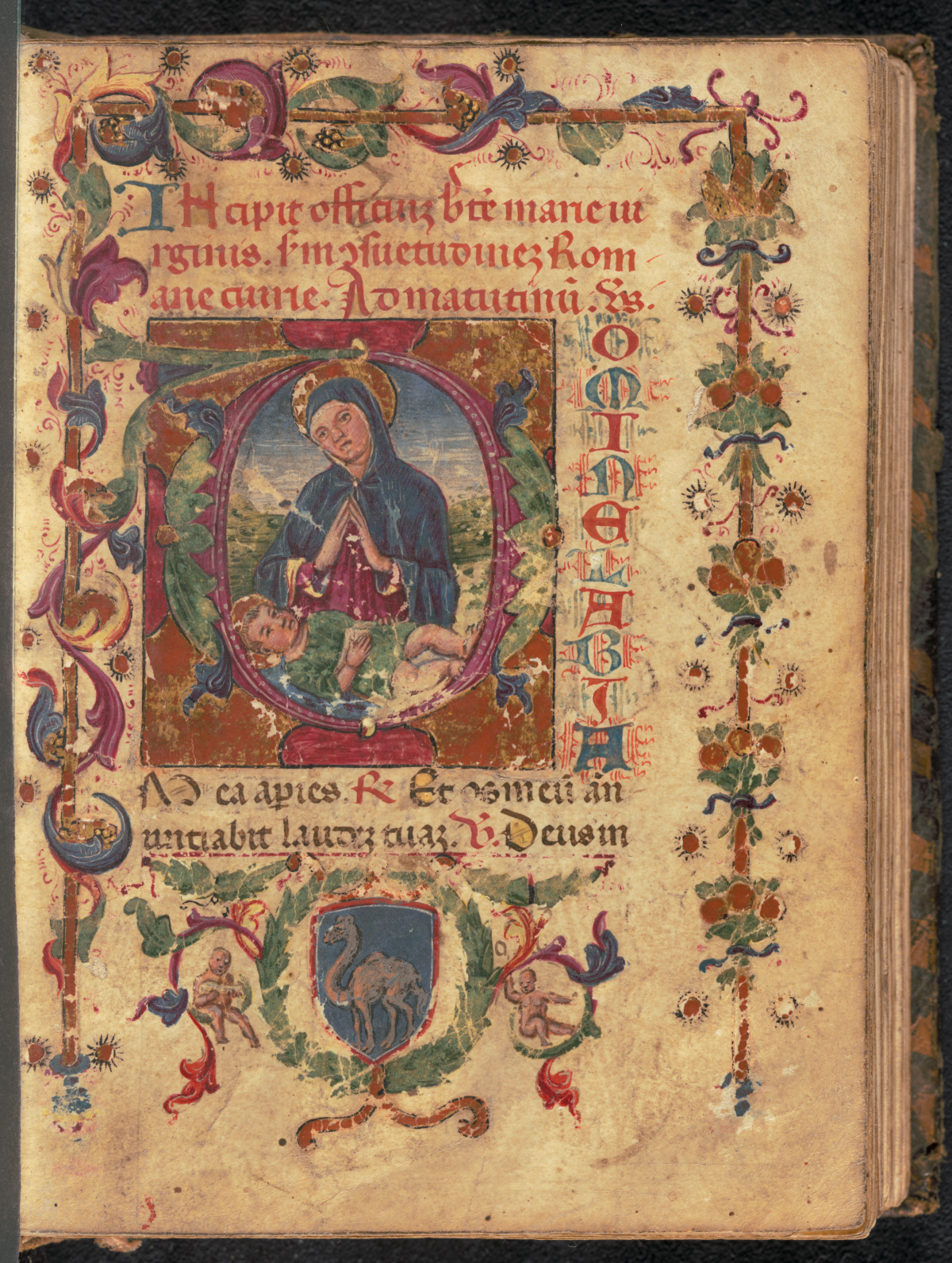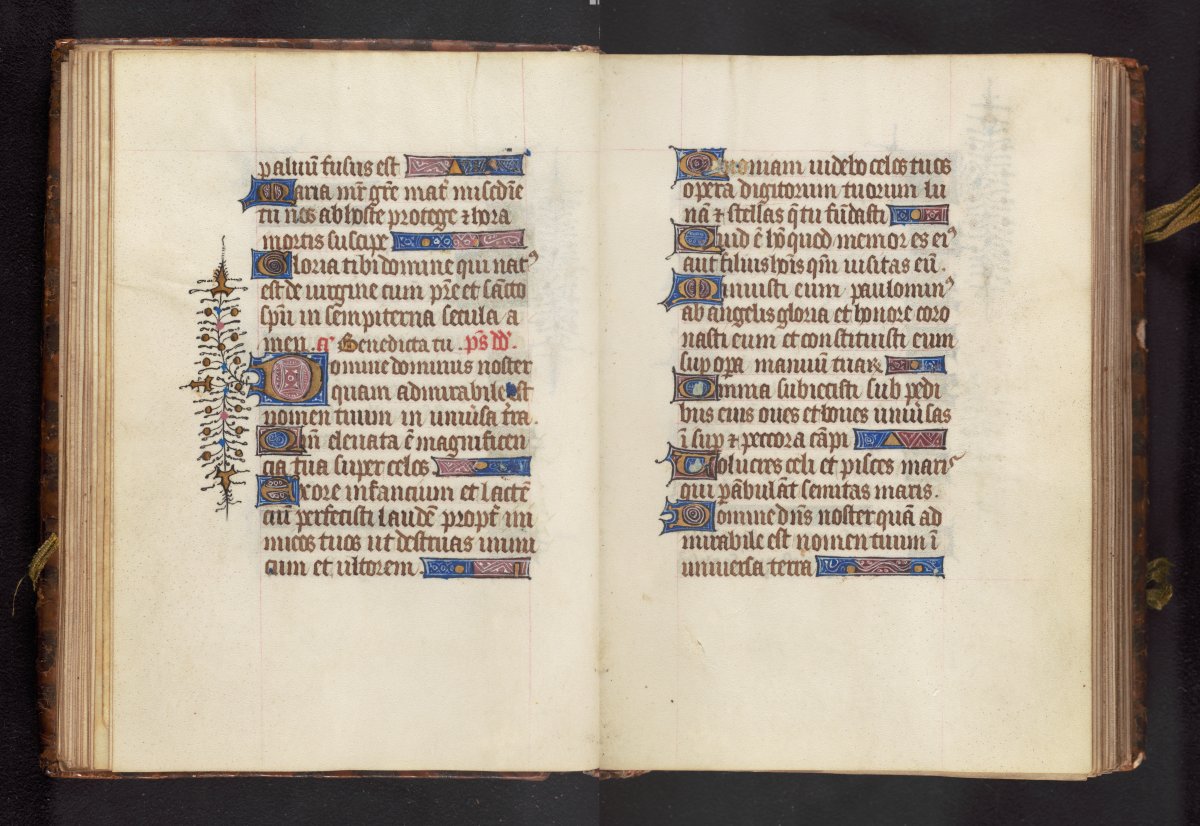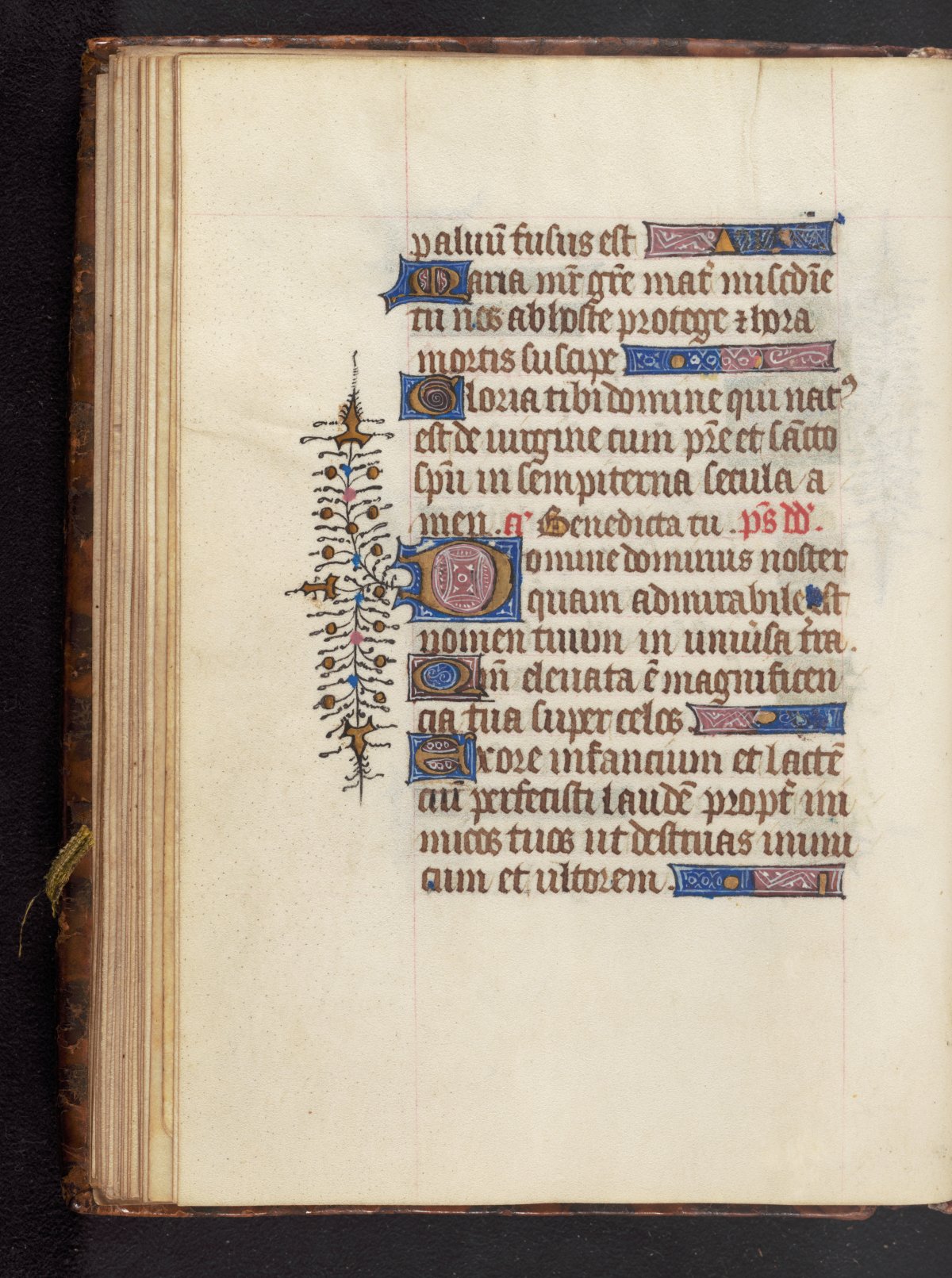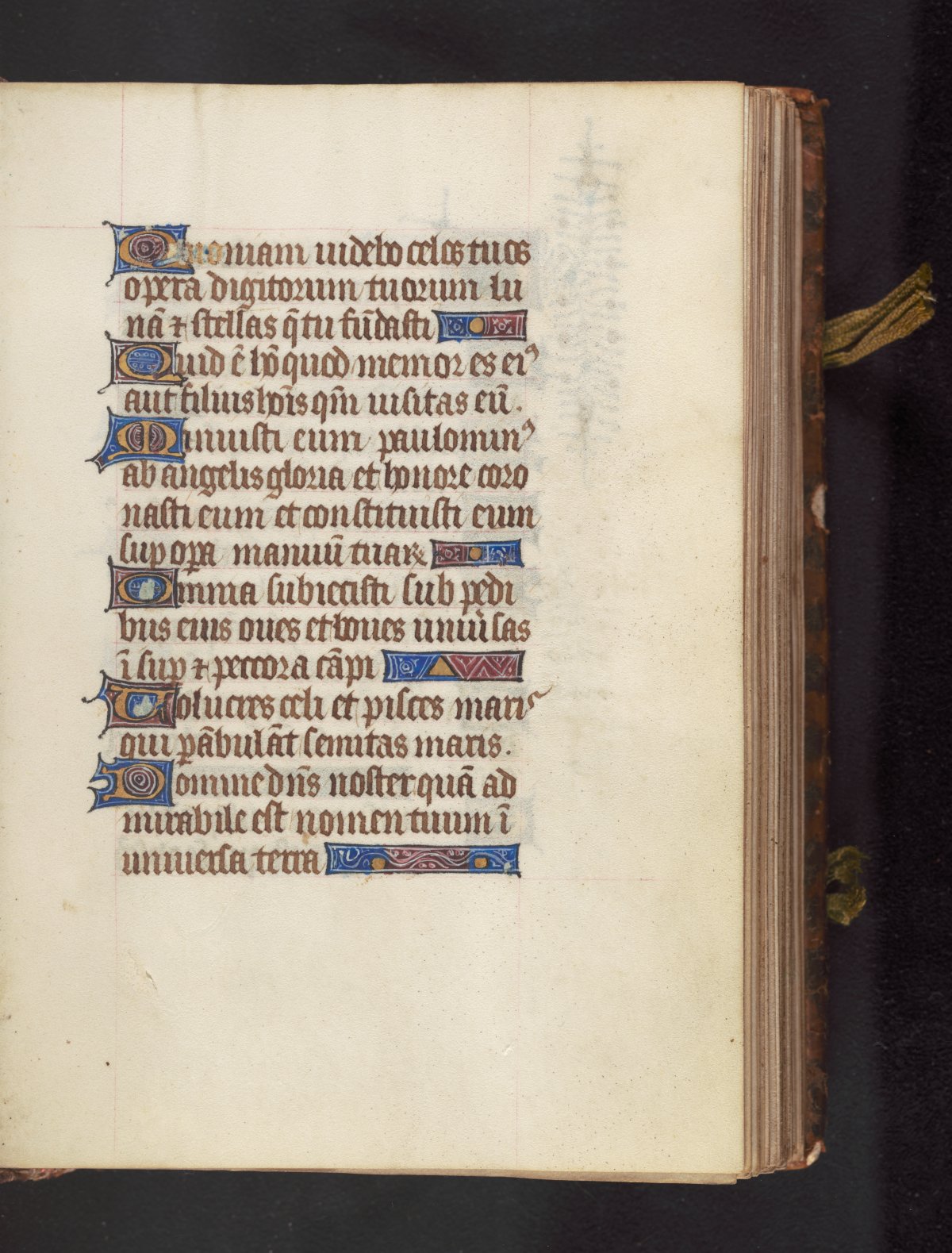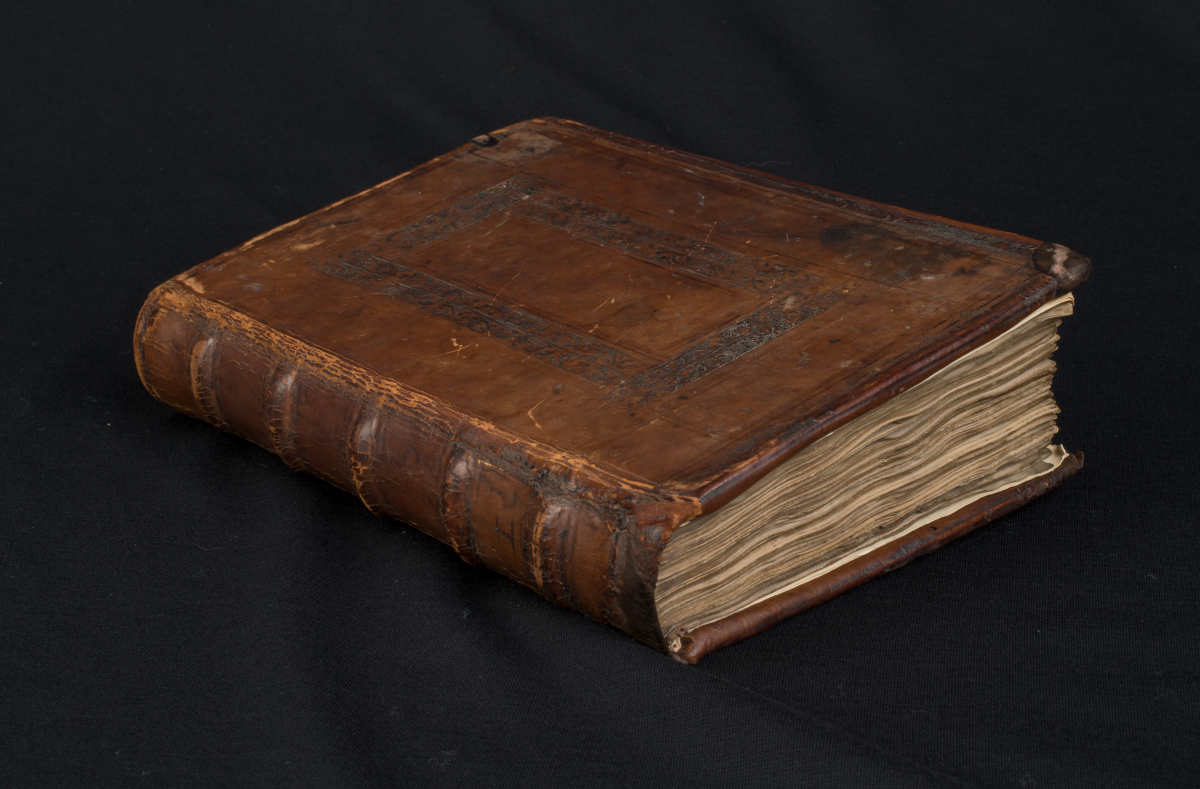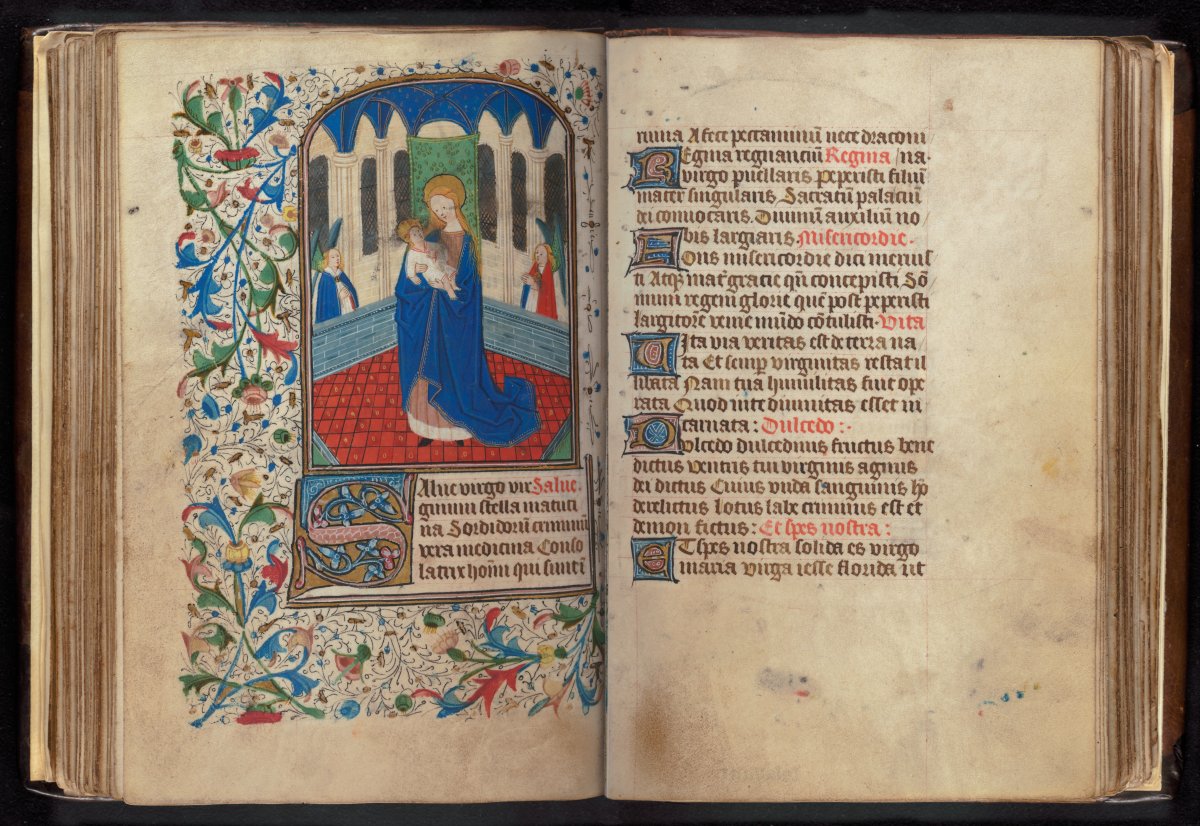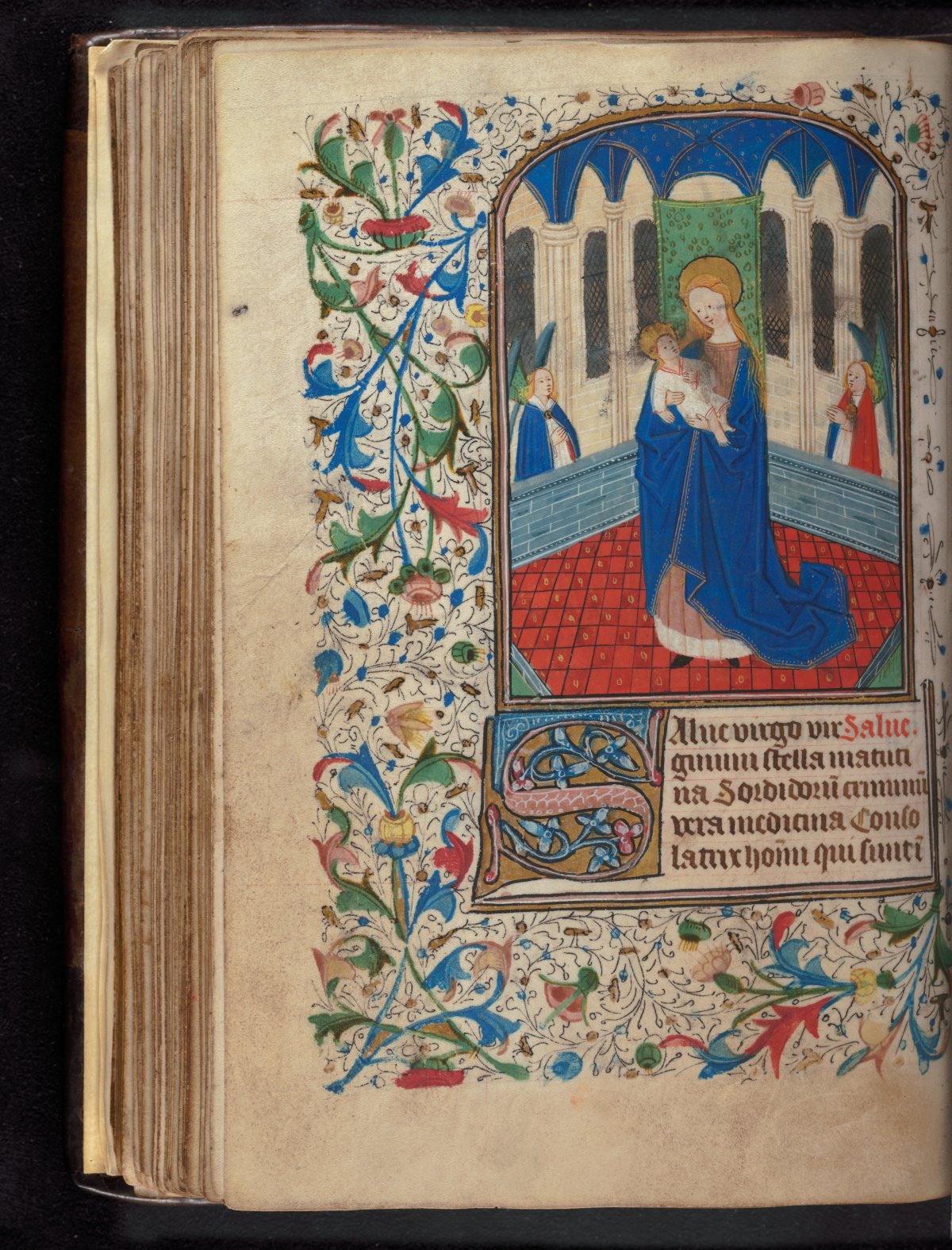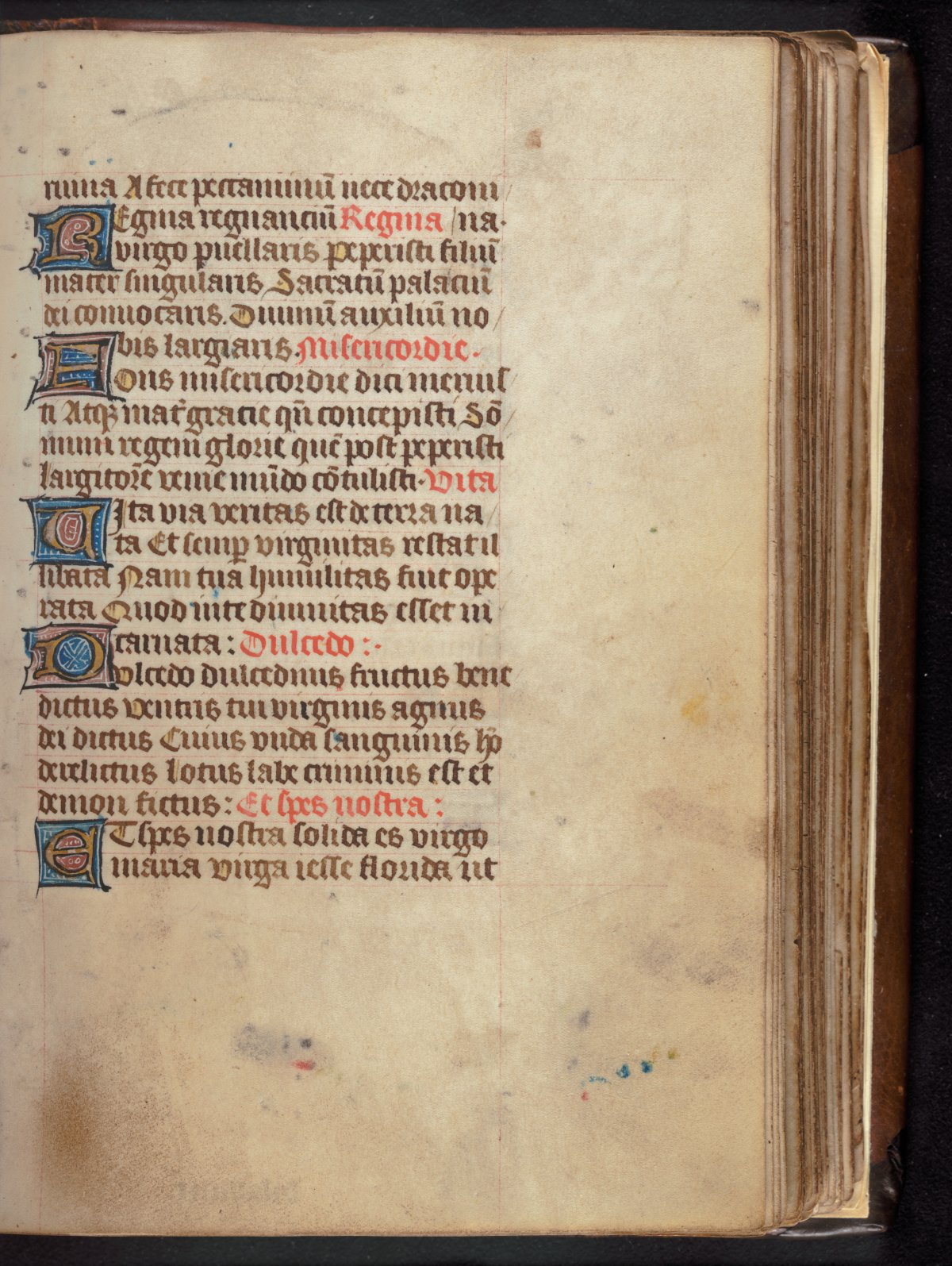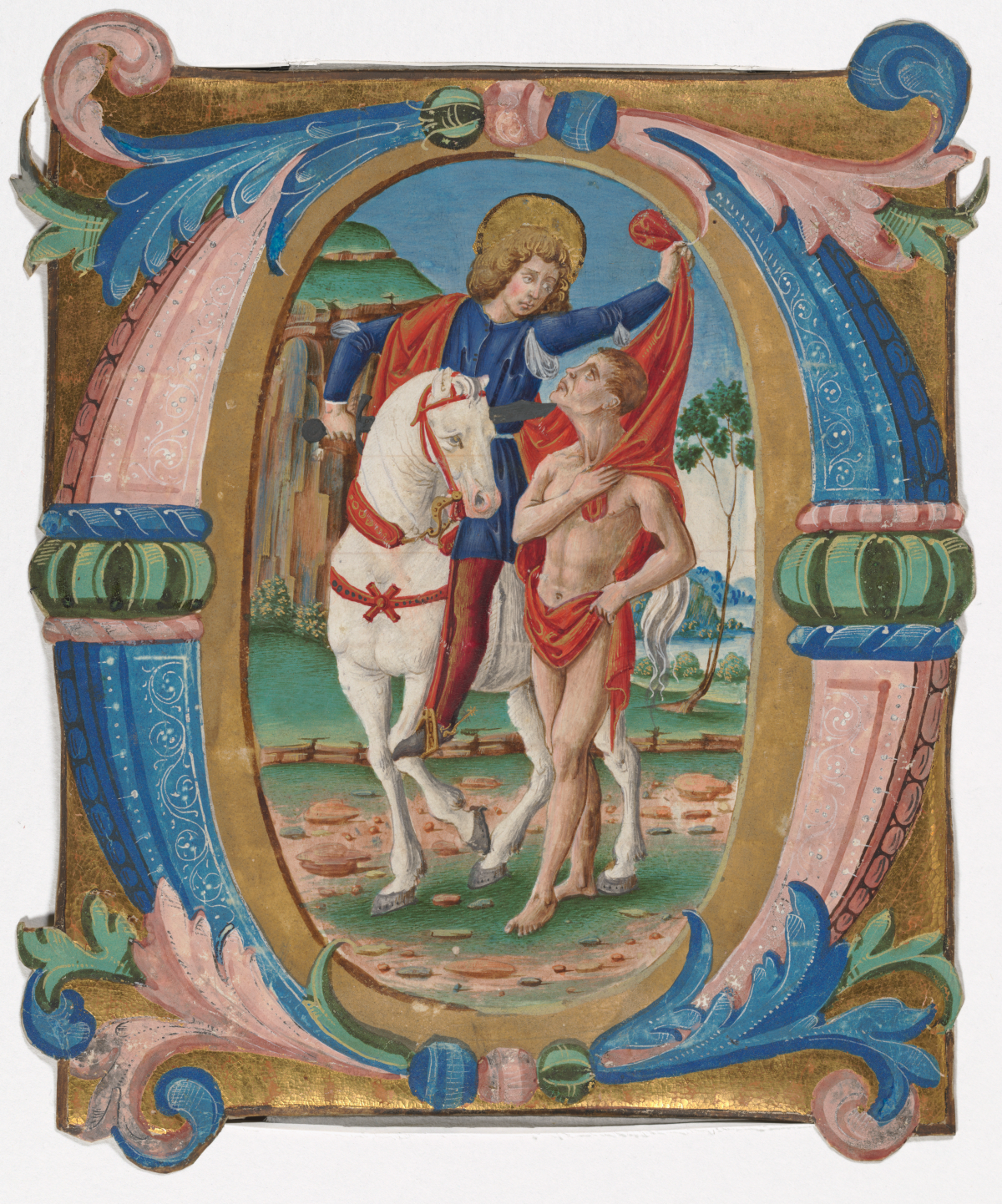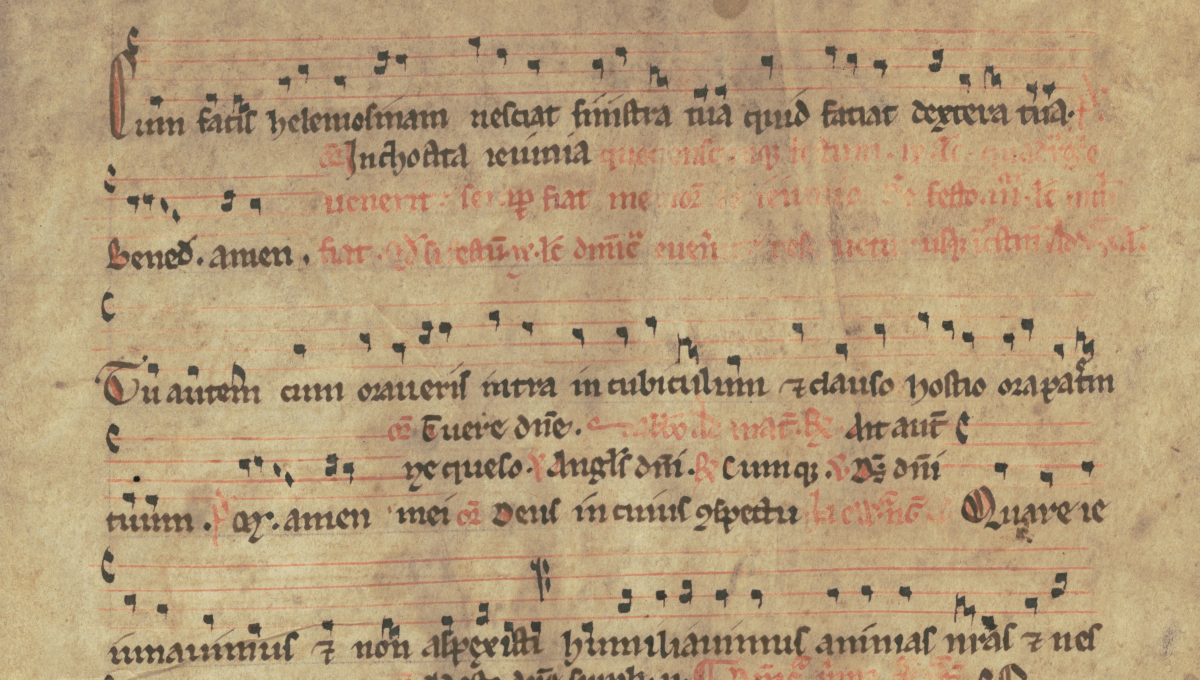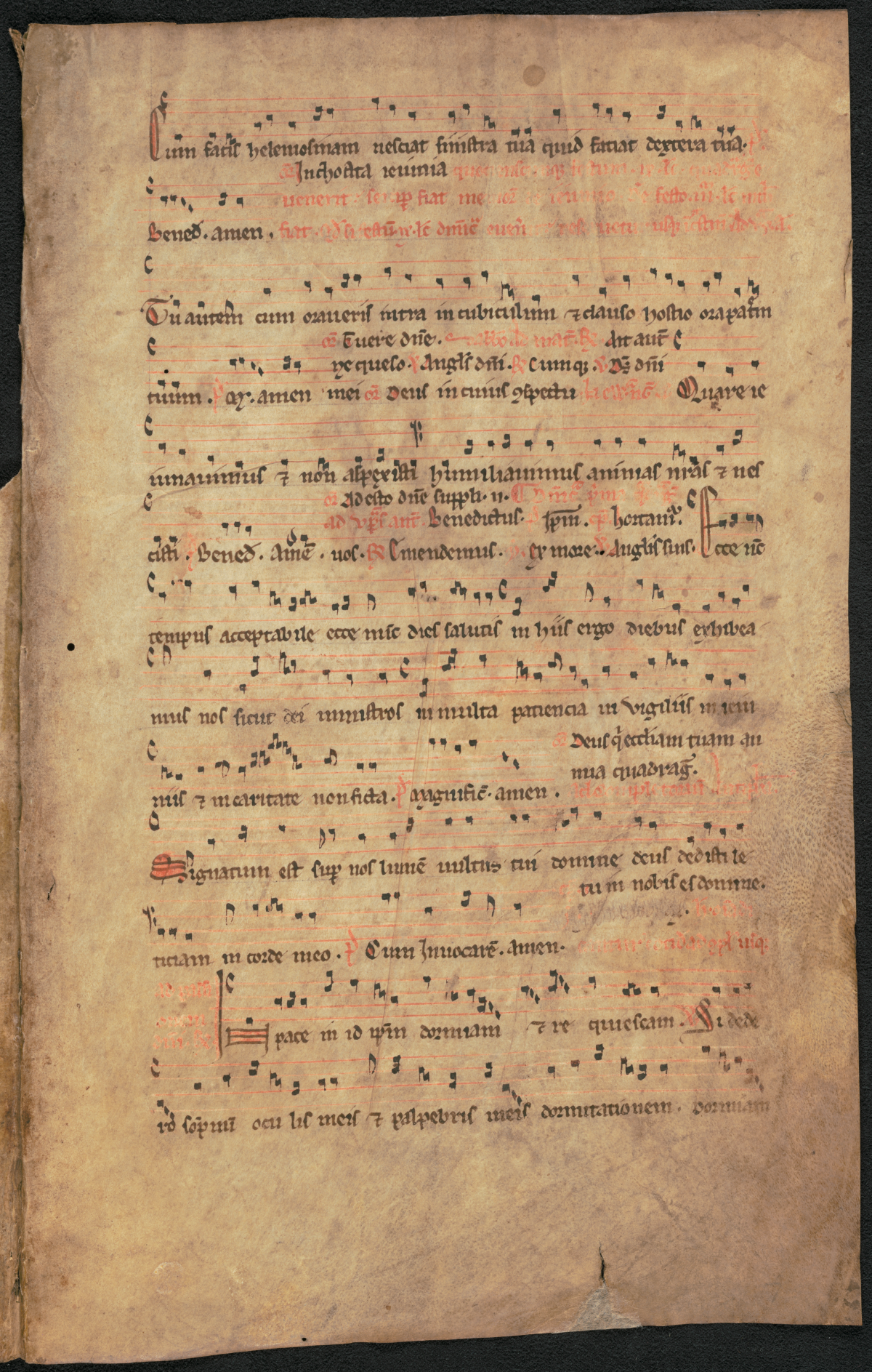This theme supports the following Content Descriptions for History 7-10 – Year 8 : Medieval Europe and the modern world.
AC9HH8K03
- A significant event, development, turning point or challenge that contributed to continuity and change in Medieval, Renaissance, or pre-modern Europe
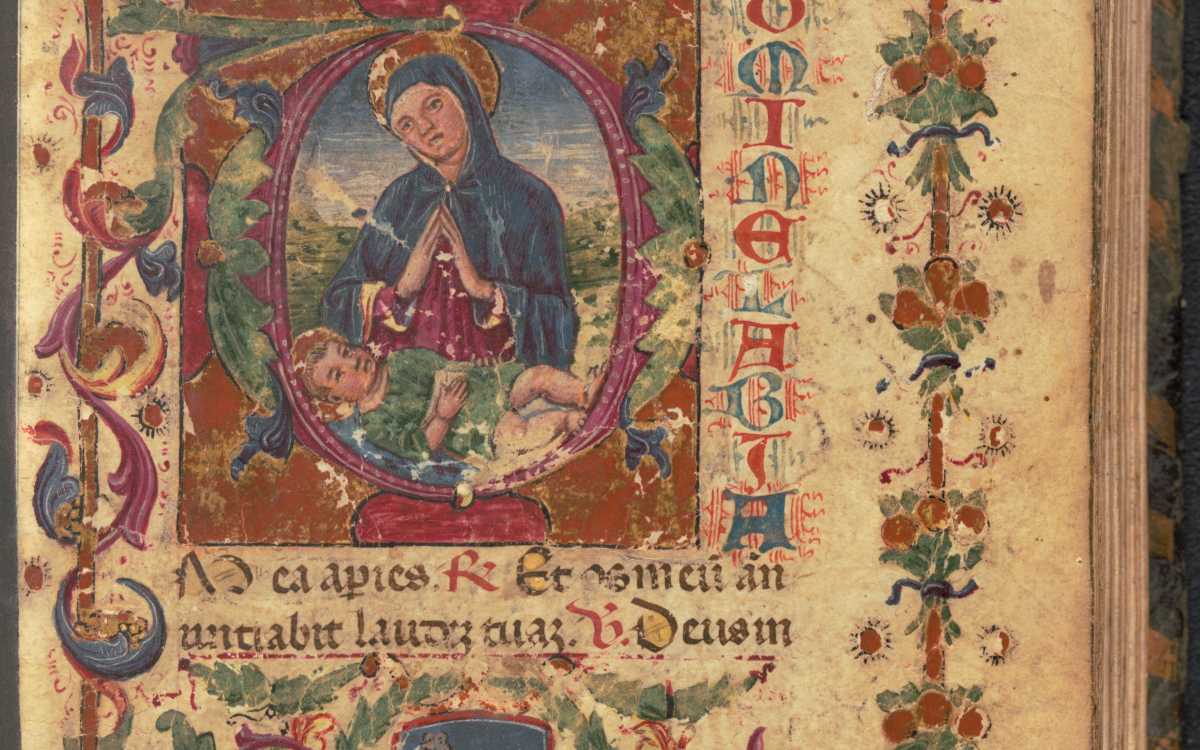
Clifford family. (1250). Clifford collection of manuscripts mainly relating to Roman Catholicism,. /Item 6/Folio recto 1/Latin Book of Hours, Italy,. https://nla.gov.au/nla.obj-115693205
As time progressed, the number of people who could read did begin to increase, as some countries began to increase the emphasis on educating their people to basic levels. More people could write their own name and, depending on the level of education, a few basic words and phrases. However, owning books was still not common for most of the population, except for the Bible.
Most Medieval Christian households would own a Bible, or a book called a Book of Hours. These books described which prayer or passage of the Bible should be read at what time of the day. While each person in the house may not be able to read every word, they would most likely know the words of the prayer or passage by memory.
These books were popular throughout the Medieval period, and as such there are many examples that remain today. The National Library of Australia holds several books of hours from across Europe during the Middle Ages.
Early examples are handwritten with simple text and decoration. Books were an expensive luxury, and even the simplest examples would have been cherished by the family.
This example from France is quite conservative in its decoration but is more elaborate than some. It is handwritten and incorporates different coloured ink for different parts of the text, along with decorative letters in blue and yellow at the beginning of each passage. Sprouting from each leading letter are flowers or vines. The text is written in Latin and includes passages from the Bible and a calendar showing holy days.
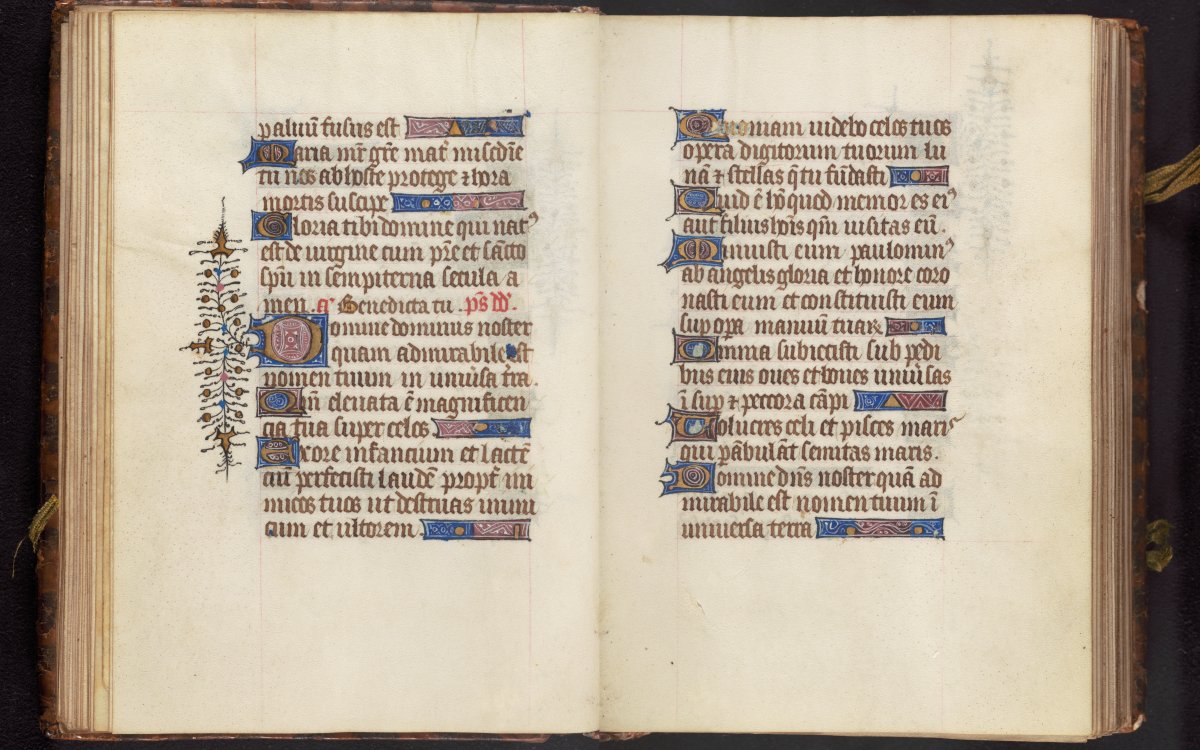
Composite of of nla.obj-80620518 and nla.obj-80620303
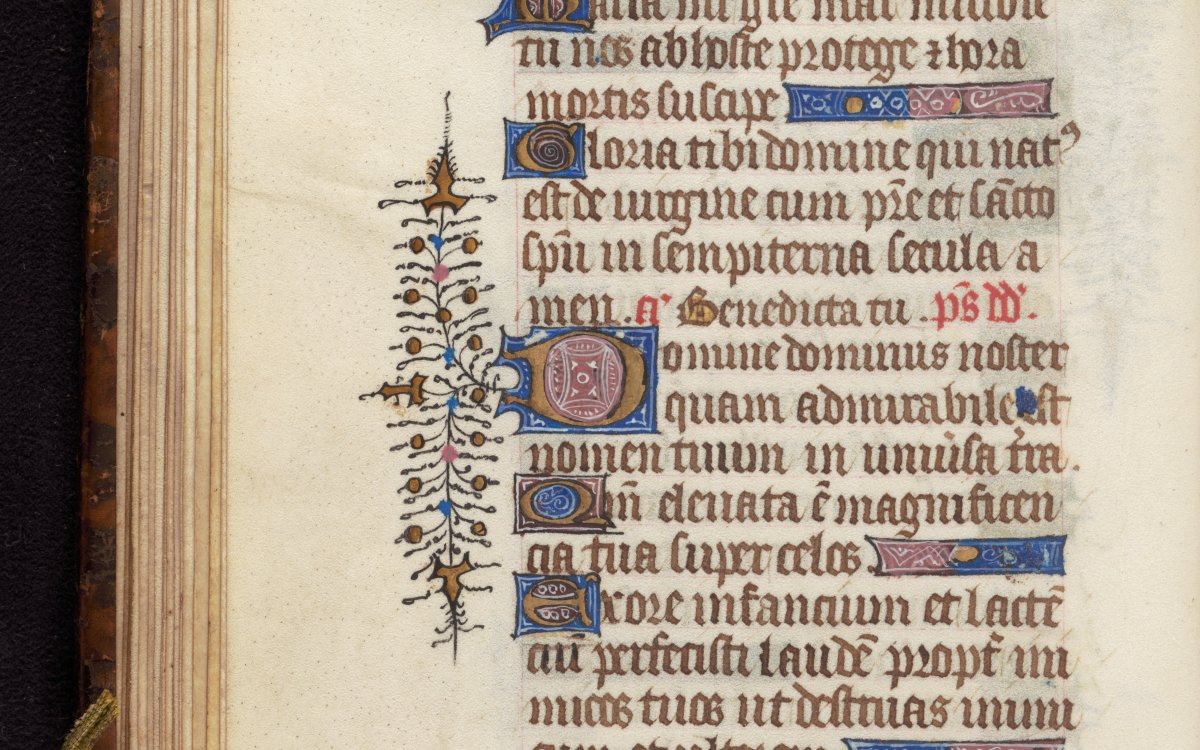
Clifford family. (1250). Clifford collection of manuscripts mainly relating to Roman Catholicism,. /Item 5/Folio verso 27., Latin and French Book of Hours, France., https://nla.gov.au/nla.obj-80620303
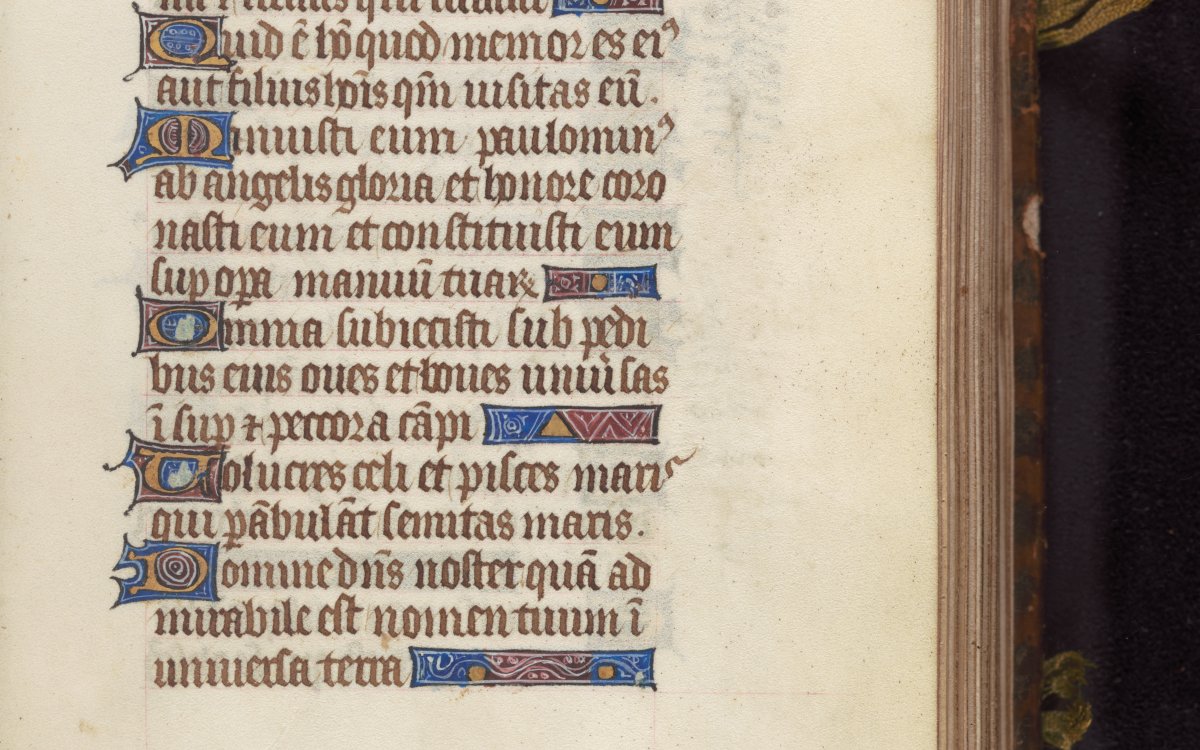
Clifford family. (1250). Clifford collection of manuscripts mainly relating to Roman Catholicism,. /Item 5/Folio verso 28., Latin and French Book of Hours, France., https://nla.gov.au/nla.obj-80620518
These large letters are called illuminated letters. This name come from the way they were decorated. Initially, for a letter to be called “illuminated” it had to be covered in a thin layer of gold leaf, so it reflected the light. However, the term is now used to describe any manuscript that includes these large decorative letters.
These large letters are called illuminated letters. This name come from the way they were decorated. Initially, for a letter to be called “illuminated” it had to be covered in a thin layer of gold leaf, so it reflected the light. However, the term is now used to describe any manuscript that includes these large decorative letters.
Some books of hours are elaborate, full of colourful images, large ornate illuminated letters and some even have dedicated prayers to their owners. These books would have been very expensive and owned by wealthy families.
The example below is from around 1450 CE and was printed in Holland, which is part of the modern nation of The Netherlands. It is considered one of the National Library’s most decorative books of hours. The text is in Latin, but within the margins English notes have been made. This would suggest it was printed in the Netherlands but made for English customers.
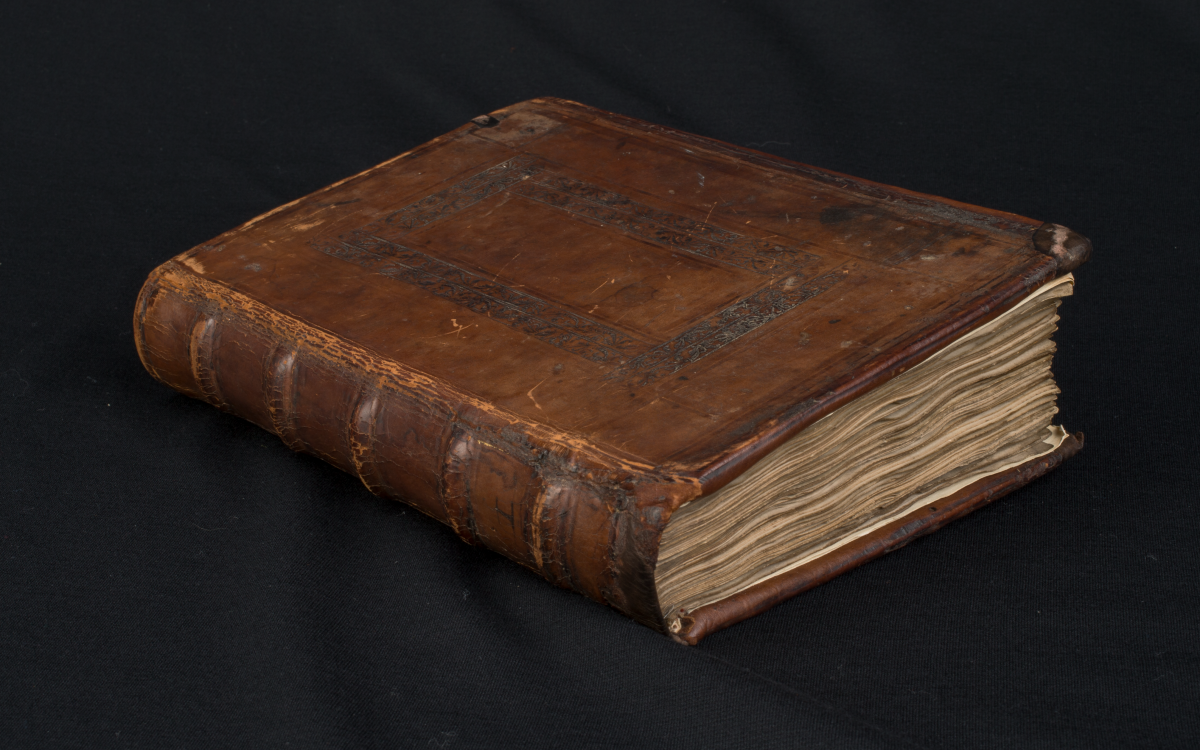
Clifford family. (1250). Clifford collection of manuscripts mainly relating to Roman Catholicism,. /Item 9/Part Additional image - 5,. https://nla.gov.au/nla.obj-241374846
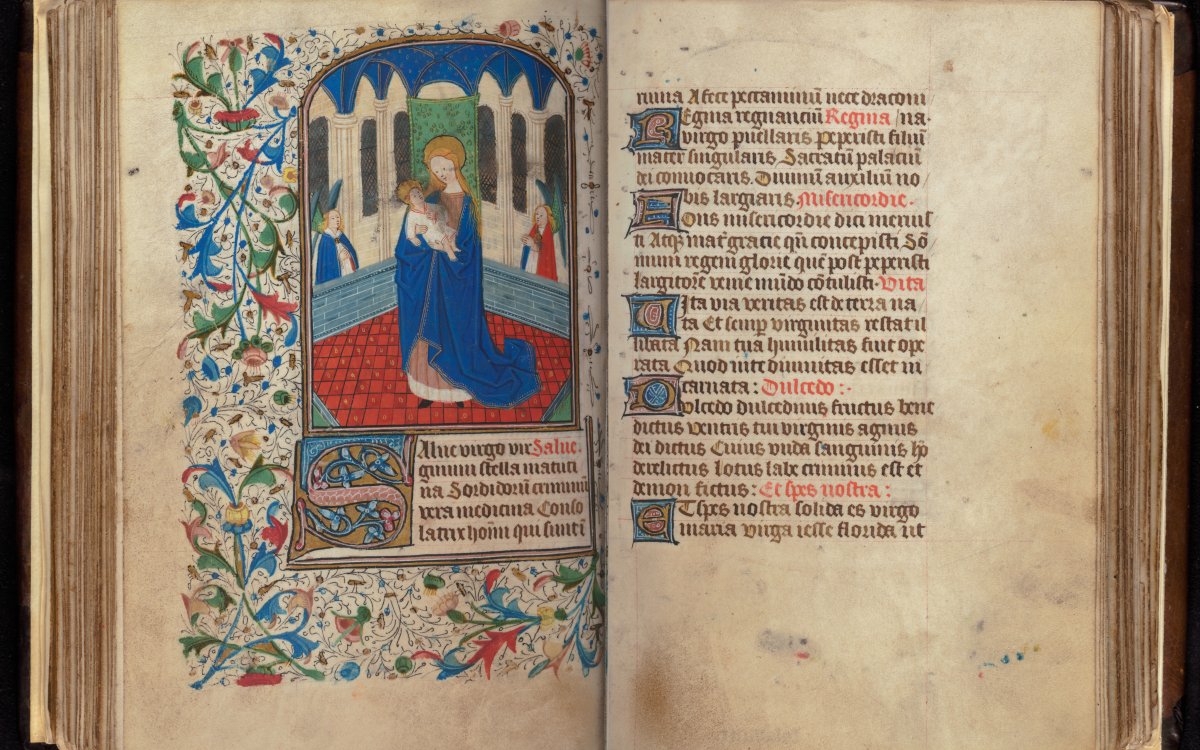
Composite of nla.obj-82416631 and nla.obj-82416823
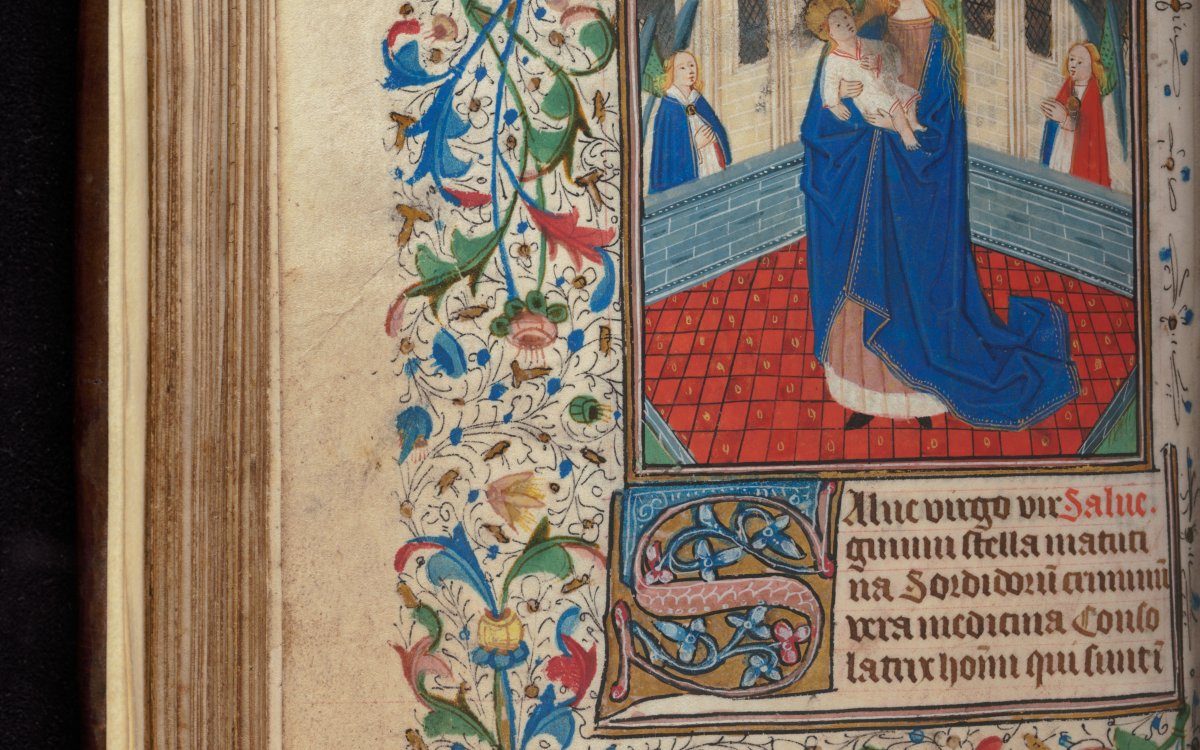
Clifford family. (1250). Clifford collection of manuscripts mainly relating to Roman Catholicism,. Item 9/Folio verso 53,. Latin Book of Hours, Southern Netherlands,. https://nla.gov.au/nla.obj-82416631
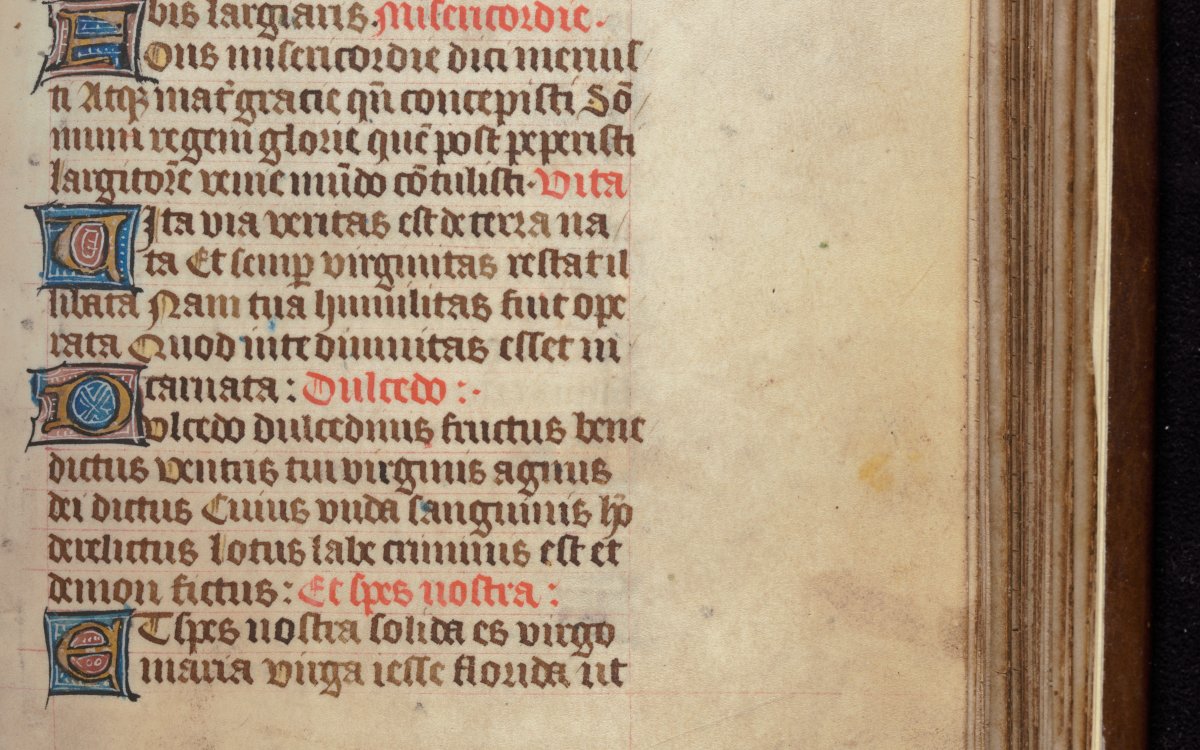
MS 1097-Clifford collection of manuscripts mainly relating to Roman Catholicism, circa 1250-1915., /Item 9/Folio recto 54., Latin Book of Hours, Southern Netherlands https://nla.gov.au/nla.obj-82416823
Dr. Susannah Helman talks more about this book below
Illuminated letters were not just used for Bibles and books of hours. They appear across a broad range of Medieval documents. The example below comes from a large music book used in a church. It is a large letter ‘O’ coloured and decorated with gold leaf. The image inside the ‘O’ shows St Martin and a beggar. As there is an image inside the letter, this is called a “historiated initial”. As it is so large and so richly decorated, it is likely the church that originally owned this would have been very wealthy.
The book from which the letter comes would have contained musical notation for church services. The pages below are not from the same book as the historiated initial, but come from a similar time and region and are likely similar to what would have been used in the book.
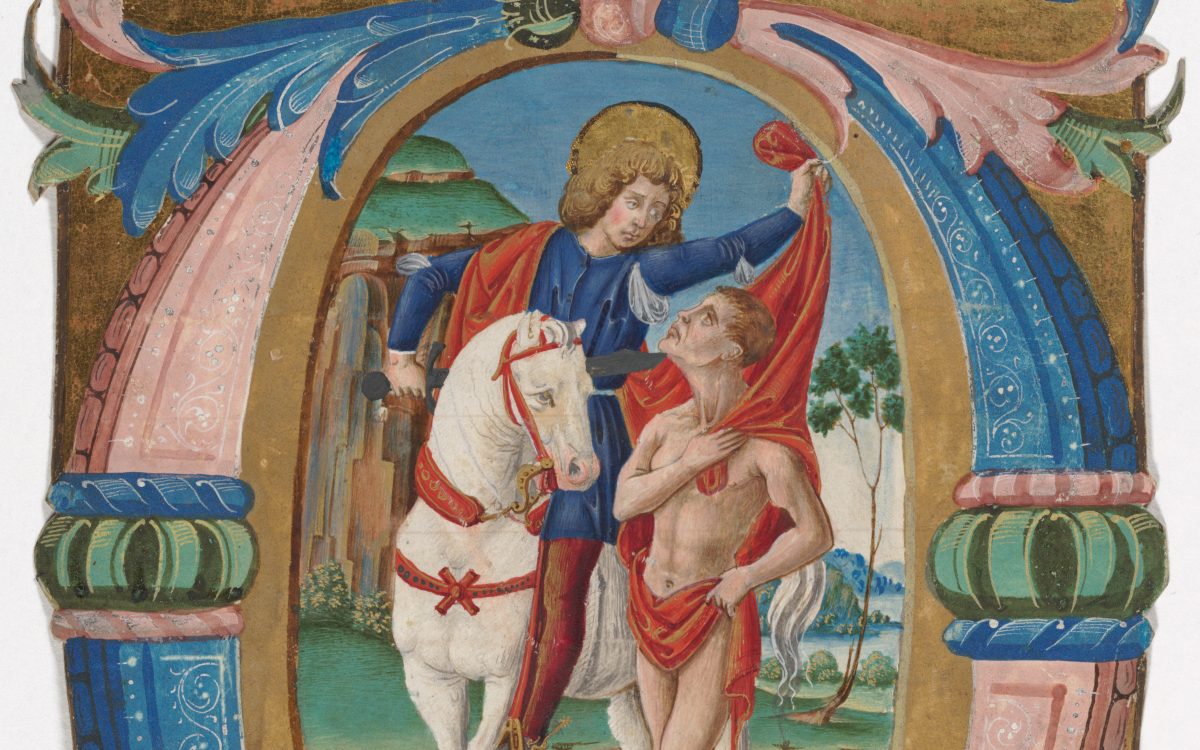
([14--?]). Early Flemish, German, Italian, Spanish, French woodcuts. /Item PIC/14340/41,. https://nla.gov.au/nla.obj-2902124787
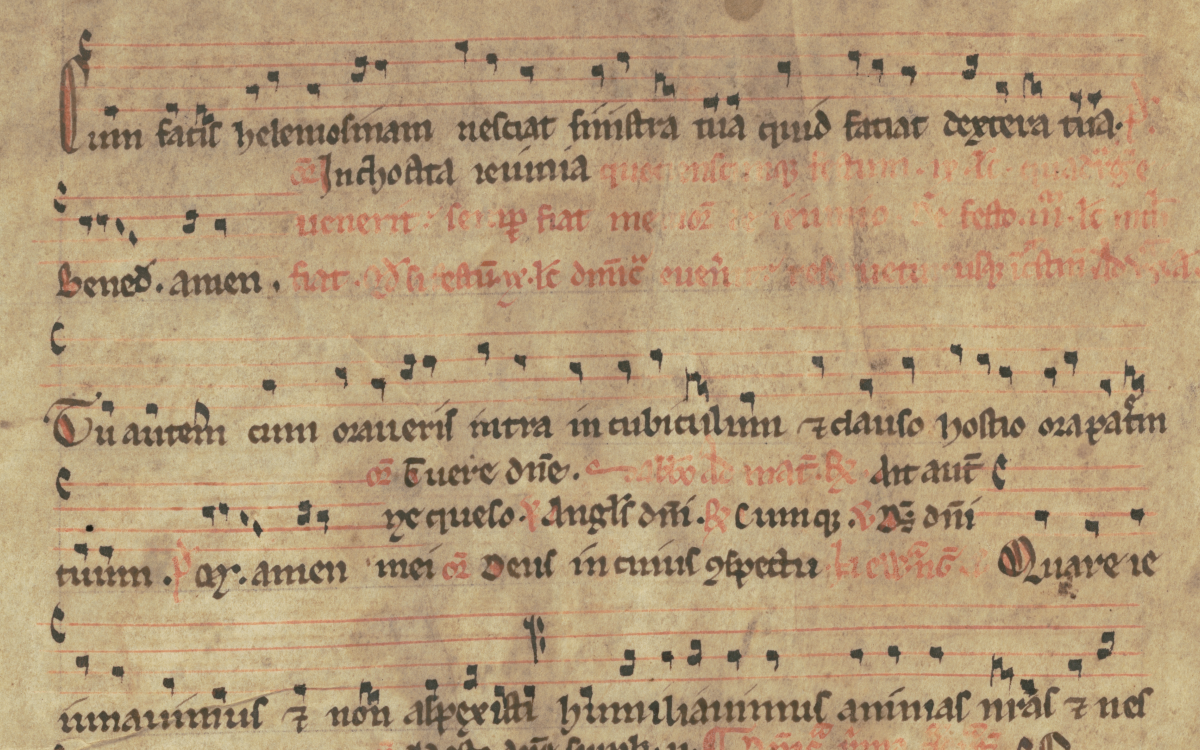
Detail of Nan Kivell, Rex. (1819). Medieval manuscripts and documents from the Nan Kivell calligraphy collection,. /Series 2/Item 5/Recto 5b., Musico-liturgical documents / Bifolio from an Antiphonal,. https://nla.gov.au/nla.obj-214193804
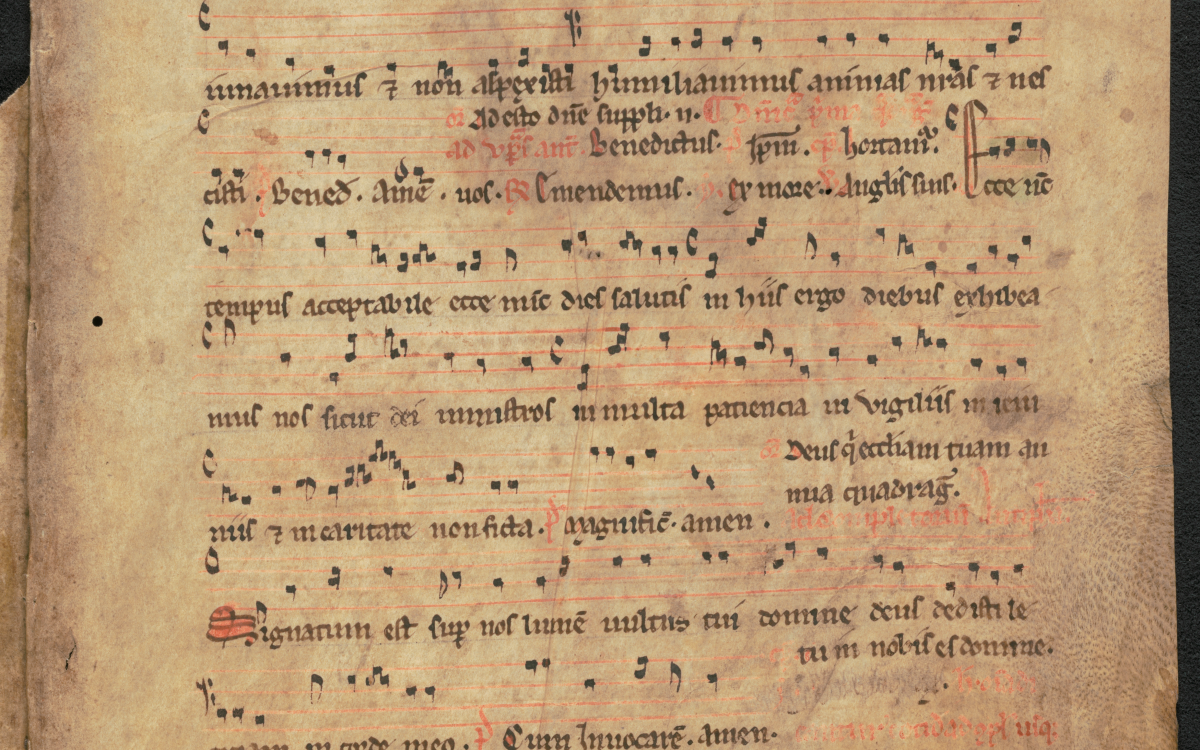
Nan Kivell, Rex. (1819). Medieval manuscripts and documents from the Nan Kivell calligraphy collection,. /Series 2/Item 5/Recto 5b., Musico-liturgical documents / Bifolio from an Antiphonal,. https://nla.gov.au/nla.obj-214193804
Activities
- In Medieval society, a Bible or Book of Hours was one of the most precious and expensive items a family might own. It would often be passed down through the generations. Over time, many notes, damage, repairs and usage marks accumulated in these documents.
- Ask students to consider if this damage/notes/marks make a document better or worse as a primary source? Do they add more information we can learn from?
- What can we learn about the people who owned these well-used documents from the marks and damage?
- What can we learn about the time and place they came from?
- Have students design their own historiated initial using the first letter of the name or family name.
- The image(s) inside and around the letter should reflect them or something important to them.
- The image(s) inside and around the letter should reflect them or something important to them.
- Illuminated texts are often considered some of the most beautiful historical documents, both for the artwork and the fine penmanship featured in some copies. However, in modern times, it is rare to see books with such works.
- As a class, consider why it is less common to see works like illuminated manuscripts in modern times.
- What factors may have contributed to the decline in popularity of this type of work?
- Despite being uncommon, are these documents still produced?
- Is there a modern equivalent?
- As a class, consider why it is less common to see works like illuminated manuscripts in modern times.
- Owning a beautifully illustrated Bible or book in Medieval times was a luxury. Items like these were considered objects of prestige or status symbols. They may have been given pride of place in a home and taken out to show guests.
- Are books still considered status symbols today? Why? Why not?
- What are some items that we consider to be luxury items or items that give people status today?
- What each person, family, society, or generation consider a luxury may be very different from another.
- Have students think about what they might want most as a gift for the holidays or a celebration.
- Have students ask older family members across different generations what their most desired gift was when they were a similar age.
- What kinds of things did different generations consider the “desirable” item to have? How has it changed from today?
